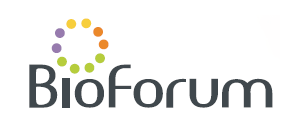Electrochemical Sensor Array for Label-Free Detection of Oxidative Stress
Hadar Ben-Yoav, Biomedical Engineering, Ben-Gurion University of the Negev, Beer Sheva, Israel (benyoav@bgu.ac.il)
Ahed Shibli, Biomedical Engineering, Ben-gurion University Of The Negev, Beer Sheva, Israel
Salam Dabsan, Biomedical Engineering, Ben-gurion University Of The Negev, Beer Sheva, Israel
Alexander Snezhko, Biomedical Engineering, Ben-gurion University Of The Negev, Beer Sheva, Israel
Avia Lavon, Biomedical Engineering, Ben-gurion University Of The Negev, Beer Sheva, Israel
Ishai Luz, Immunology, Microbiology & Genetics, Ben-gurion University Of The Negev, Beer Sheva, Israel
Noy Machluf Katz, Immunology, Microbiology & Genetics, Ben-gurion University Of The Negev, Beer Sheva, Israel
Tomer Cooks, Immunology, Microbiology & Genetics, Ben-gurion University Of The Negev, Beer Sheva, Israel
Detecting oxidative stress (OS) in biofluids [1] currently lacks reliable, fast, and inexpensive in-situ sensors, particularly for simultaneous measurement of total oxidant status (TOS) [2] and total antioxidant capacity (TAC) [3]. This limitation is significant given OS's role in diseases like bladder cancer, where it manifests as increased oxidants and/or decreased antioxidants. We present the first simultaneous, in-situ detection of TAC and TOS in untreated urine using a novel electrodes array modified with electron and mass transfer limiting films. The array employs reduced graphene oxide (rGO), chitosan, chitosan-carbon nanotubes (chitosan-CNT), and platinum black (PtBlk) modifications, analyzed through chemometric models. Our electrochemical characterization used ascorbic acid (AA) as a TAC marker and hydrogen peroxide (H2O2) as a TOS marker. PtBlk, chitosan-CNT, and rGO showed enhanced H2O2 detection compared to bare electrodes, while all electrodes demonstrated AA sensitivity. The system achieved average response slopes of 3.9 ± 1.1 [mA/M] (AA) and 3.4 ± 3 [mA/M] (H2O2). Using partial least square regression and feature extraction algorithm, our model successfully predicted TAC and TOS concentrations with high accuracy: 100% and 100.8% recovery, 0.99 and 0.91 Pearson correlation coefficient, and 0.08 mM and 2.7 µM root mean squared error respectively. This platform enables real-time, in-situ analysis of complex biological samples. Future development will focus on miniaturization for analyzing redox profiles in patient biological samples for disease diagnosis, particularly cancer.
References:
1. Massari, F., C. Ciccarese, M. Santoni, R. Iacovelli, R. Mazzucchelli, F. Piva, et al., Metabolic phenotype of bladder cancer. Cancer Treat Rev, 2016. 45: p. 46-57.
2. Erel, O., A new automated colorimetric method for measuring total oxidant status. Clin Biochem, 2005. 38(12): p. 1103-1111.
3. Erel, O., A novel automated direct measurement method for total antioxidant capacity using a new generation, more stable ABTS radical cation. Clin Biochem, 2004. 37(4): p. 277-285.
Short Biography of Presenting Author
Dr. Hadar Ben-Yoav did his B.Sc. (2004) in the Multidisciplinary program of Physics and Biology, M.Sc. (2006) in Biotechnology, and Ph.D. (2010) in Electrical Engineering under the supervision of Professors Yosi Shacham-Diamand and Amihay Freeman from Tel Aviv University, Israel. Dr. Ben-Yoav did his post-doctoral research (2015) at the Department of Electrical and Computer Engineering at the University of Maryland. Currently, Dr. Ben-Yoav is the head of the Nanobioelectronics Laboratory and an Associate Professor at the Department of Biomedical Engineering in Ben-Gurion University of the Negev. His research team focuses on interfacing biology with microelectronics. In particular, they study the integration of biological materials (such as DNA, proteins, and cells) with micro- and nano-electronic devices that will harness their unique functionalities for the development of the next generation of personalized health monitoring applications (such as electronic skin patches and implantable sensors that can continuously monitor our health).
Organized & Produced by:

POB 4043, Ness Ziona 70400, Israel
Tel.: +972-8-9313070, Fax: +972-8-9313071
Site: www.bioforum.org.il,
E-mail: hagit@bioforum.co.il